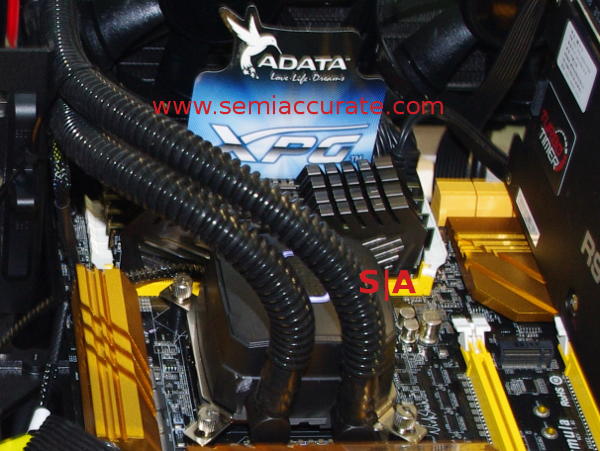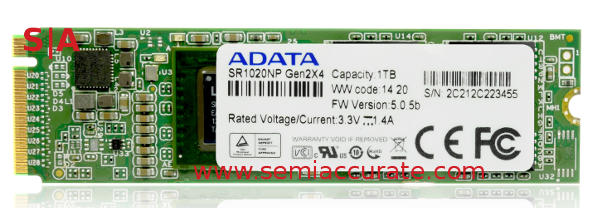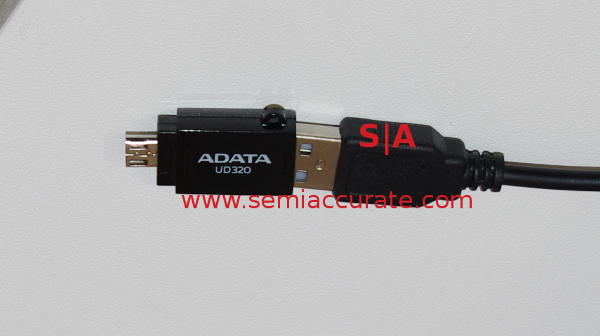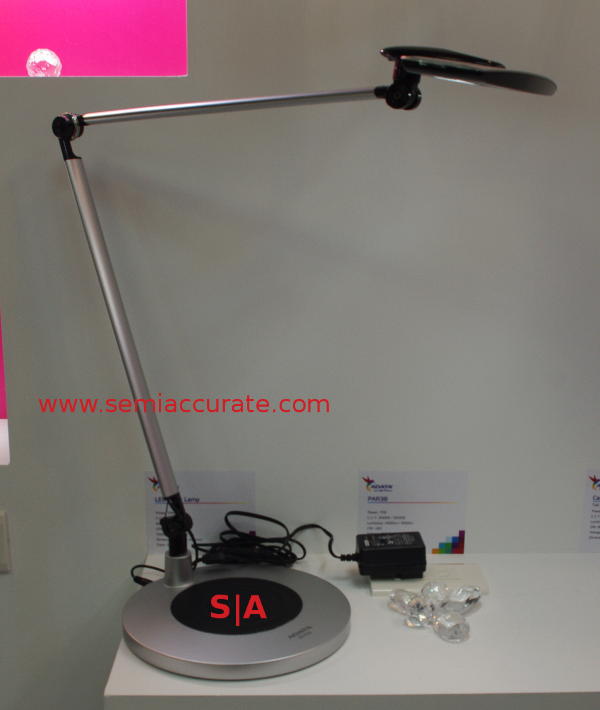![]() As usual at Computex, Adata had a lot of new memory goodies to show off from SSDs to USB dongles with a twist. This is particularly impressive in light of the lack of new SSD oriented flash controllers on the market.
As usual at Computex, Adata had a lot of new memory goodies to show off from SSDs to USB dongles with a twist. This is particularly impressive in light of the lack of new SSD oriented flash controllers on the market.
First off is the server memory sector are two new DDR4 modules, not that there is anything to plug them in to yet. The DDR4 modules come in standard and VLP sizes but both run at 2133MHz. Since they are aimed at servers they are registered modules, 4/8GB for VLP, 4/8/16GB for the full height versions. Basically exactly what you would expect for the impending Haswell-EP systems.
On the enthusiast front things are a bit more interesting for DDR4 with the initial XPG Z1 modules coming in at 2800MHz. The kits have 4x 8GB modules, enough for most systems to boot Windows with and still have room for a game. Like the server DDR4 modules, there aren’t any systems to plug them in to until the Intel X99 systems début this fall but at least there will be fast RAM out when they come out.

DDR3 runs at 3100MHz officially…
On the DDR3 front we start out with the slowest of the bunch, XPG V3 running at a mere 2933MHz. These parts once again come in a kit of 4x 8GB modules so Windows should boot and be minimally functional. That is a dig at Windows mind you, the memory is just fine and quite fast. If that isn’t enough there is a smaller kit of XPG V2 DIMMs, 4x 4GB modules. These run at 3100MHz or ‘fast enough’ for most daily tasks. Should that not be enough Adata strongly suggests that an overclocker with a clue should be able to get 3400 out of these without too much effort. That is more ‘faster enougher’ or something.
On the SSD side of the world there is a lot of not too much to talk about mainly due to this, and nothing SemiAccurate heard at Computex changed the timetables we talked about in February. Adata had 1TB drives based on Marvell 910 and 920 controllers but the big 2TB drives were based on Sandforce’s Griffin/SF-3700 parts. Don’t hold your breath waiting for the last one to hit the market though, but that isn’t Adata’s fault.

Sadly this device is not imminent
The saddest part about the whole Griffin implosion is the M.2 card Sandforce was showing off, it was a killer part. Take an M.2 PCIe2 x4 card and slap said vaporcontroller on it. Glue 1TB of flash on the top, bottom, and sides if you have steady enough hands, and you have a killer SSD. If x2 solutions can push >1GBps speeds, a x4 should be able to double that with ease should the controller ever be released. *SIGH*
On the micro-SSD market, you know the single package ‘chip’ SSDs that are meant for tablets, the bar has been raised a bit. Adata was showing off a 128GB module both as bare chips and in various on the market devices. By Q4 they should be joined by EMMC5.0 versions and then versions with LPDDR2 caches. Small, efficient, decent capacities, and soon with decent random R/W performance too. Tablets rejoice.

UD320 OTG drive with USB pass-through
One of the least expected items at the show, not just at the Adata stand, was the above USB on-the-go dongle. Technically it is called the UD320 and comes in 16 and 32GB capacities. Why is this interesting? Because unlike most of the other OTG drives out there, the UD320 has a full-sized USB port out the back that acts like a pass-through while the drive is plugged in. The demo had a UD320 with a game controller stuck in the back playing games on a tablet, a very useful additional piece of functionality. No one else at Computex that SemiAccurate saw had a similar device.

Place phone on SemiAccurate logo (not included)
Last up is something that you probably didn’t know Adata makes, LEDs. The company has a burgeoning LED business that makes everything from lightbulbs to massive street lights, they just don’t talk much about it. The LED desk lamp prototype above might not sound all that interesting but there is a wireless charging pad in the base. Put one of these on your desk, plop your phone on it, and it charges. Not a massive leap in tech, but like their slick CE700 stand, it is a very well implemented version of a pedestrian technology.S|A
Have you signed up for our newsletter yet?
Did you know that you can access all our past subscription-only articles with a simple Student Membership for 100 USD per year? If you want in-depth analysis and exclusive exclusives, we don’t make the news, we just report it so there is no guarantee when exclusives are added to the Professional level but that’s where you’ll find the deep dive analysis.
Charlie Demerjian
Latest posts by Charlie Demerjian (see all)
- Microsoft Throws Qualcomm Under The Bus Too - May 10, 2024
- Microsoft Absolutely Screws Intel and AMD Over AI PCs - May 8, 2024
- Qualcomm Is Cheating On Their Snapdragon X Elite/Pro Benchmarks - Apr 24, 2024
- What is Qualcomm’s Purwa/X Pro SoC? - Apr 19, 2024
- Intel Announces their NXE: 5000 High NA EUV Tool - Apr 18, 2024